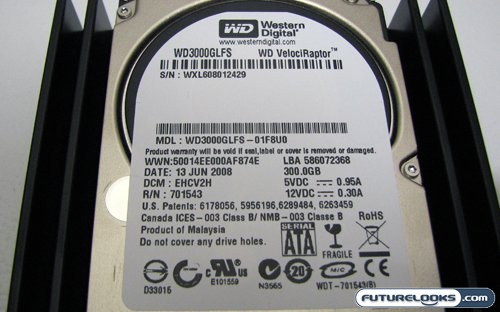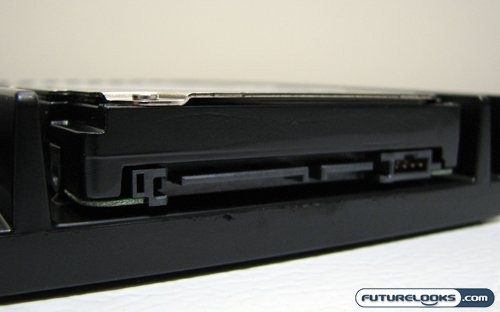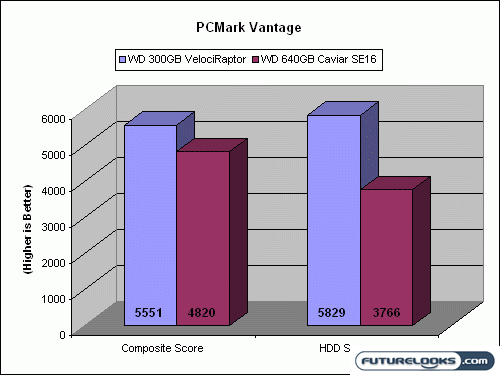Maybe I’ll Toss This in My Gaming Laptop…

Before you start salivating over placing this in your laptop to replace the existing 2.5″ hard drive you should know two things. The first is that the drive is 15cm tall, which would make things difficult as most laptops will only accept drives up to 9.5mm tall. The second is the afore mentioned heat generated by the drive. Though the use of the IcePack is primarily for form factor conversion, a 10,000 RPM drive can generate a fair degree of heat. This isn’t something you’d want trapped in the cramped quarters of a laptop. This is meant to be a desktop drive, through and through.

The only other downside with the IcePack comes into play if you decide to use this drive for what it’s billed as an enterprise level storage solution. The position of the SATA and power connectors breaks the standard used on every SATA drive since inception. This means that it will not be compatible with any SATA or SAS backplane. In addition to that, you wouldn’t be able to mount this drive into many external drive enclosures. This also rules out hard drive docks like the Thermaltake BlacX Dock and the Vantec Nexstar Dock. Though that’s not as big a concern if you think about it. However, if you had an awesome server case with a backplane and you wanted four of these drives in RAID0 or RAID5, you couldn’t do it.
Really this is purely an enthusiast drive. When speaking strictly about the form factor, it’s not meant for server duty, however, WD is thinking of selling the VelociRaptor without IcePack to the enterprise market. As it stands, this drive is at home in a single installation or two drive array, mounted in a standard ATX case. These aren’t neccesarily bad points, and they will be mitigated as long as performance is up where it would be.
Time To Benchmark
To test the Western Digital VelociRaptor, I installed it into my standard test bed. The specifications are as follows:
- AMD Phenom 9850 2.5GHz Quad Core CPU
- Asus M3A32-MVP Deluxe/WiFi-AP 790FX Motherboard
- OCZ Platinum XTC REV.2 PC2-6400 2GB 2X1GB DDR2-800 Memory Kit
- ZOTAC GeForce GTX 280 Video Card
- Western Digital 640GB Caviar SE16 7200rpm SATA2 Hard Drive
- NZXT Tempest Midtower ATX Case
- Thermaltake Toughpower 1000W Power Supply
Of particular note is the hard drive used in this test rig. This particular model employs two 320GB platters, and has been tested as one of the fastest standard SATA hard drives available. This is perfect for testing the VelociRaptor against. Testing itself consisted of running through some software benchmarks, and measuring one important load time. Here we go.
PCMark Vantage

The first benchmark we subjected our test hard drives to was Futuremark’s latest system benchmark suite; PCMark Vantage. The two tests we focused on were the PCMark composite test and the Hard Drive specific test. The myriad of other tests in PCMark Vantage don’t specifically test HD performance. Rather they lump together a bunch of aspects into their own composite score. As for the test itself, they are synthetic, but they borrow code from real world apps for testing.
The results produced by PCMark were rather noticeable, with the VelociRaptor taking a decidedly decent lead over our base hard drive. In the composite test the VelociRaptor posted a 13% performance increase over our base drive, and the HDD test posted a whopping 35% boost in favour of the VelociRaptor. Hopefully these marks carry on into our other tests.
Real-Time Price and Stock Check – Check For More Products Here
